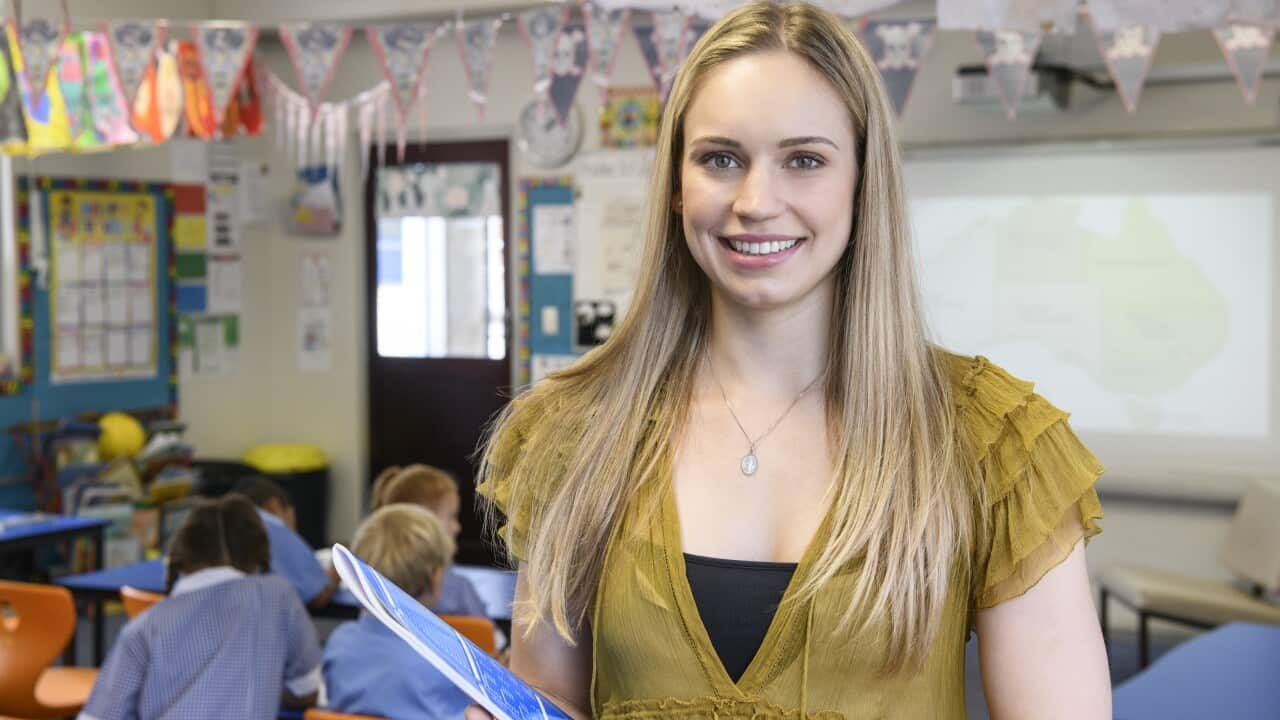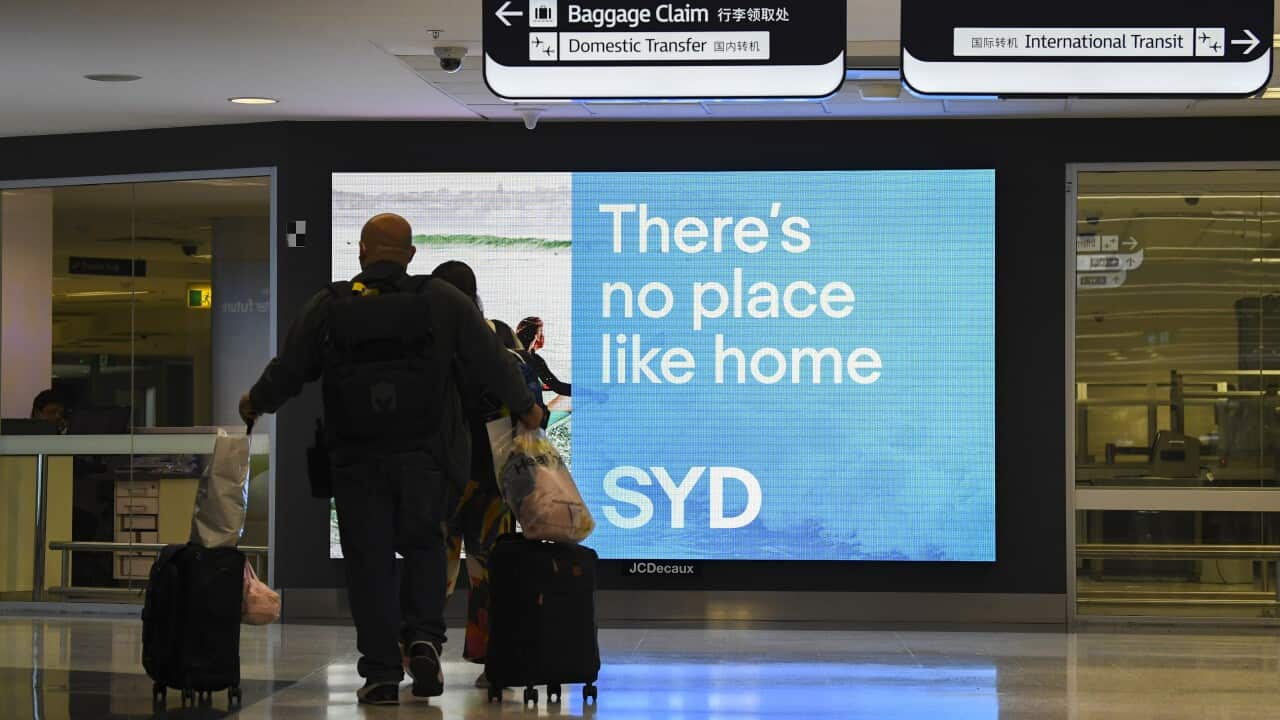Skilled visa applications for teachers and healthcare workers are now being assessed in just three days after a change to how skilled visas are prioritised.
The Department of Home Affairs has stopped using the Priority Migration Skilled Occupation List (PMSOL) to rank skilled visa applications as it was seen as outdated and no longer reflected the critical workforce shortages seen across Australia.
The list, which was introduced in September 2020, previously identified 44 occupations on the wider Skilled Migration Occupation List (SMOL) to fast-track amid the COVID-19 pandemic recovery. Its use was discontinued from 28 October this year.
The list included occupations such as engineers, chefs, accountants, psychiatrists, programmers and pharmacists. It also included healthcare workers such as nurses and doctors, but not teachers.

Visa applications for nurses are now only taking three days to process. Source: Getty / The Good Brigade
"These applications are now being assessed in three days," a spokesperson for the department told SBS News.
The change applies to all skilled visa nomination and visa applications that are yet to be decided, as well as new applications lodged including temporary, employer-sponsored and regional visas. The full list is below.
It also removes priority for the global talent and business innovation and investment programs.
Occupations now being prioritised include school teachers, health and welfare support workers, childcare centre managers, medical scientists, counsellors, psychologists, social workers and medical technicians.
New order of priority for skilled visa applications
Under the new ministerial direction, skilled visa applications are now being decided in the following order of priority:
1. Healthcare or teaching occupation applications;
2. For employer-sponsored visas, applicants nominated by an Approved sponsor with Accredited Status;
3. Those for a designated regional area;
4. For permanent and provisional visa subclasses, visa applications that count towards the migration program, excluding the Subclass 188 (Business Innovation and Investment (Provisional)) visa;
5. All other visa applications.
For all categories above, priority will be given to holders of eligible passports as not all visa streams are open to every nationality.
Within each category, priority is given to applicants located outside Australia for provisional and permanent skilled visa applications.

Anthony Albanese's government has made changes to Australia's skilled migration program since winning the election in May. Source: AAP / Lucas Coch
- Subclass 124 (Distinguished Talent)
- Subclass 186 (Employer Nomination Scheme)
- Subclass 187 (Regional Sponsored Migration Scheme)
- Subclass 188 (Business Innovation and Investment) (Provisional)
- Subclass 189 (Skilled - Independent)
- Subclass 190 (Skilled - Nominated)
- Subclass 191 (Permanent Residence (Skilled Regional))
- Subclass 457 (Temporary Work (Skilled))
- Subclass 482 (Temporary Skill Shortage)
- Subclass 489 (Skilled - Regional (Provisional))
- Subclass 491 (Skilled Work Regional (Provisional))
- Subclass 494 (Employer Sponsored Regional (Provisional))
- Subclass 858 (Global Talent)
- Subclass 887 (Skilled - Regional)
- Subclass 888 (Business Innovation and Investment (Permanent).
Visa applications now being processed faster
A spokesperson for the Department of Home Affairs said the previous PMSOL system was a "time-consuming and complex assessment" that was only necessary because of the backlog of applications that had built up while travel restrictions to Australia were in place during the pandemic.
"Removal of the PMSOL will allow more applications to be processed faster, particularly for the critical Temporary Skill Shortage visa, which is designed to respond rapidly to labour market needs," the spokesperson said.
Former Department of Immigration secretary Abul Rizvi agreed the changes would make processing quicker "because they're now targeting a much wider range of occupations".
"There's no point in having a priority list when you're targeting just about every occupation," he said.
Mr Rizvi also backed the focus on teachers and healthcare workers saying he thought the government would struggle to get enough applications regardless.
"They will probably be granting visas to teachers and nurses as quickly as they apply."
More changes are likely, with the federal government promising to further assess the effectiveness of skilled migration occupation lists. The last update to the current Skilled Migration Occupation List was made on 11 March 2019.
The government has also announced a comprehensive review of Australia's migration with three experts expected to deliver an interim report by the end of February, and a final strategy by late March/April.
Former top public servant Martin Parkinson, who is one of the experts conducting the review, has the assessment process for visas.

Martin Parkinson is co-conducting a review of Australia's migration system.
Temporary skilled migration visas are currently only available to workers in certain occupations, provided they earn at least $53,900 a year.
Teachers earn on average between $85,000 and $100,000 a year, according to online employment marketplace Seek, while nurses earn between $70,000 and $90,000.
Reduction to backlog of visa applications
Since 1 June, the Department of Home Affairs has finalised more than 43,000 temporary skilled and 47,000 permanent skilled visas.
In November, Immigration Minister Andrew Giles that Australia's visa' backlog, which was once at almost one million applications, was down to 755,000.
Mr Giles said the government was on track for a backlog of around 600,000 by the end of the year, which is almost half the number of applications in the system when Labor took office in May.
SBS understands around 442 extra staff are now working on temporary and migration visa processing compared to the start of May.
Grants of temporary skilled visas in 2022-23 are up 120 per cent, compared to the same time last year.
SBS News cannot provide immigration advice - you can find more information at





